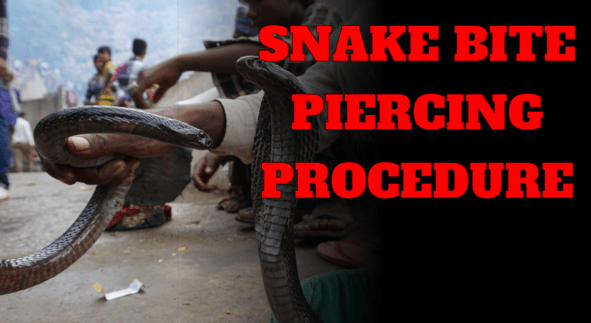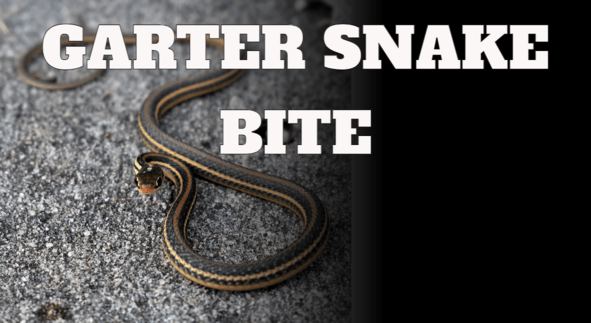Introduction
Snake bite piercing, also referred to as double lip piercing, is a fashionable form of body modification that has gained considerable popularity in recent times.
This distinctive trend involves the placement of two symmetrical piercings on both sides of the lower lip, resembling the venomous fangs of a snake.
Variations of this style, such as snake bite tongue piercing and snake bite lip piercing, offer individuals the opportunity to express their unique identity and personal flair.
In this comprehensive manual, we will delve into every aspect you need to be acquainted with regarding snake bite piercing, encompassing the procedure, aftercare guidelines, potential hazards, and more.
1. What is Snake Bite Piercing?
Snake bite piercing, a widely embraced form of body modification, encompasses the insertion of a pair of matching piercings on the lower lip.
Typically positioned on either side, these piercings mimic the distinctive fangs of a serpent, hence the name.
This particular aesthetic has garnered significant admiration from individuals seeking to infuse their look with a distinctive and daring allure.

2. Snake Bite Piercing Procedure
Obtaining snake bite piercings necessitates meticulous consideration and should always be entrusted to the expertise of a professional piercer. Here is a comprehensive outline of the customary procedure:
- Consultation: Prior to the procedure, you will engage in a consultation with the piercer to discuss your desired positioning, jewelry options, and any apprehensions you may have.
- Preparation: The piercer will sterilize the vicinity surrounding your lips and meticulously mark the precise placement of the piercings.
- Numbing: In certain instances, a numbing agent may be administered to alleviate potential discomfort during the piercing process.
- Piercing: Utilizing a sterile needle, the piercer will skillfully create the perforations for the piercings. This step is typically swift in nature.
- Jewelry Insertion: Once the piercings are established, the piercer will adroitly insert the selected jewelry pieces.
- Aftercare Instructions: The piercer will furnish you with comprehensive instructions for post-piercing care to facilitate proper healing and mitigate the likelihood of infection.
3. Snake Bite Piercing Aftercare
- Ensuring proper aftercare is paramount to facilitate the healing process of your snake bite piercings. Here are vital aftercare recommendations to adhere to:
- Cleanse the piercings twice daily using a saline solution or a blend of warm water and sea salt.
- Refrain from touching the piercings with unclean hands
- . • Steer clear of smoking, as it can impede the healing trajectory.
- Exercise caution while eating or drinking to avert irritation or injury.
- Abstain from oral contact, such as kissing or engaging in oral activities, during the healing period.
- Avoid swimming in pools, hot tubs, or bodies of water that may harbor bacteria.
- Adhere to any supplementary aftercare instructions provided by your piercer.
- By diligently following these guidelines, you can promote optimal healing and reduce the likelihood of complications with your snake bite piercings.
By following these aftercare guidelines, you can help ensure a smooth healing process for your snake bite piercings.

Garter Snake Bite : Symptoms,First Aid and Treatment
Garter snakes are common non-venomous snakes found in various regions around the world. While their bites are generally harmless to humans, it is important to understand the details surrounding a garter snake bite.
Bite Characteristics:
When a garter snake bites, it typically delivers a quick, defensive nip rather than a deep puncture. Their teeth are small and located at the rear of their mouths.
Due to their non-venomous nature, the primary concern with a garter snake bite is potential infection rather than venomous effects.
Circumstances of Bites:
Garter snakes tend to bite humans when they feel threatened or provoked. This can occur when people attempt to handle or disturb them.
It is crucial to remember that snakes generally prefer to avoid confrontation and will usually attempt to retreat if given the opportunity.
Symptoms:
After a garter snake bite, symptoms may vary depending on individual sensitivity and the circumstances of the bite.
Common symptoms include mild pain, redness, swelling, and minor bleeding at the bite site. These symptoms are typically localized and subside within a short period.

First Aid and Treatment:
If bitten by a garter snake, it is important to remain calm and follow these steps:
- Gently clean the bite site with mild soap and water.
- Apply an antiseptic ointment and cover the wound with a clean bandage.
- Monitor the area for signs of infection, such as increasing pain, redness, or pus formation.
- Seek medical attention if there are concerns about infection or if severe symptoms develop.
Prevention: To avoid garter snake bites, it is advisable to:
- Keep a safe distance and respect their natural habitat when encountering garter snakes.
- Avoid handling or attempting to capture them unless you are experienced and knowledgeable in snake handling techniques.
- Educate children about the importance of not approaching or disturbing snakes in the wild.
Remember, while garter snake bites are generally harmless, it is essential to prioritize caution and seek appropriate medical advice if needed. Understanding the details of a garter snake bite can help alleviate concerns and promote a respectful coexistence with these fascinating reptiles.
Snake Bite Tongue Piercing
Snake bite tongue piercing, a unique form of body modification, involves the placement of two symmetrical piercings on the tongue.
This edgy style allows individuals to express their individuality and adds an intriguing touch to their overall appearance.
Snake Bite Symptoms For Dogs :
Snake bites can pose a significant risk to dogs, especially if the snake is venomous. It is crucial to be aware of the symptoms that may indicate a snake bite in your furry companion. Here are some common snake bite symptoms in dogs:
- Sudden Pain and Swelling: A dog that has been bitten by a snake may display sudden pain and swelling around the bite area. The affected region may become tender to the touch and show signs of inflammation.
- Localized Bleeding or Puncture Wounds: Snake bites can cause puncture wounds or localized bleeding on the dog's skin. If you notice any bleeding or visible bite marks, it could be an indication of a snake bite.
- Lethargy and Weakness: Dogs bitten by snakes often experience lethargy and weakness. They may appear tired, have difficulty moving, or be reluctant to engage in normal activities. This is due to the systemic effects of venom on the body.
- Rapid Breathing and Panting: Venomous snake bites can affect a dog's respiratory system, leading to rapid breathing and excessive panting. The dog may struggle to catch its breath and exhibit shallow or labored breathing.
- Dilated Pupils and Disorientation: Snake venom can also affect a dog's neurological system. Dilated pupils, disorientation, confusion, or an altered mental state can be observed in dogs that have been bitten.
- Vomiting and Diarrhea: Some dogs may experience gastrointestinal symptoms such as vomiting and diarrhea as a result of a snake bite. These symptoms may occur due to the body's response to the venom or secondary effects of the venom on organs.
- Collapse or Paralysis: In severe cases, a snake bite can lead to rapid deterioration of the dog's condition, resulting in collapse or paralysis. This is an emergency situation requiring immediate veterinary attention.
FAQ's About Snake Bite Piercing
4.1 Can I get snake bite piercings if I have sensitive skin?
Yes, individuals with sensitive skin can still get snake bite piercings. However, it is important to choose high-quality jewelry made from hypoallergenic materials, such as titanium or surgical stainless steel, to minimize the risk of irritation or allergic reactions.
4.2 How long does it take for snake bite piercings to heal?
On average, snake bite piercings take about 6 to 8 weeks to heal fully. However, individual healing times may vary. It is crucial to follow the aftercare instructions provided by your piercer and be patient throughout the healing process.
4.3 Are snake bite piercings painful?
The pain level experienced during a snake bite piercing can vary from person to person. While some individuals may feel mild discomfort, others may experience more intense pain. The process itself is typically quick, and the pain subsides shortly after the piercing is complete.
4.4 Can I change the jewelry in my snake bite piercings?
It is generally recommended to wait until your snake bite piercings are fully healed before changing the jewelry. This ensures that the piercings are stable and less prone to irritation or infection. Consult with your piercer for guidance on when it is safe to change the jewelry.
4.5 What are the risks associated with snake bite piercings?
Like any body piercing, snake bite piercings carry some risks. These include infection, excessive bleeding, allergic reactions, scarring, and migration or rejection of the piercings. However, by following proper aftercare and choosing an experienced piercer, you can minimize these risks.
4.6 Can snake bite piercings be done on any lip shape?
Snake bite piercings can be done on various lip shapes, but it is important to consult with an experienced piercer. They will assess your lip anatomy and advise on the most suitable placement for your unique features.
5. Snake Bite Tongue Piercing
Snake bite tongue piercing is another variation of the snake bite style. Instead of the lower lip, this piercing involves two symmetrical piercings on the sides of the tongue. The procedure, aftercare, and risks associated with snake bite tongue piercing are similar to those of snake bite lip piercings. It is essential to consult with a professional piercer for this specific type of piercing.
6. Garter Snake Bite: A Real Snake Encounter
While snake bite piercings are purely a form of body modification, garter snake bites refer to actual snake encounters. Garter snakes are harmless and commonly found in North America. If you come across a garter snake, it is best to leave it undisturbed and appreciate its beauty from a safe distance.
7. Snake Bite Lip Piercing
Snake bite lip piercing, as mentioned earlier, is the most common form of snake bite piercing. It involves the placement of two symmetrical piercings on the lower lip. This style offers individuals a unique and bold way to express their personal style and individuality.
8. Snake Bite Shot: A Unique Drink for Daredevils
Snake bite shot is a daring drink that combines equal parts lager and cider, often with an added splash of blackcurrant cordial. The resulting concoction is known for its refreshing and tangy taste. However, remember to consume alcohol responsibly and be aware of your limits.
Conclusion
Snake bite piercing, snake bite tongue piercing, and snake bite lip piercing are popular forms of body modification that allow individuals to express their creativity and personal style.
It is essential to approach these piercings with proper knowledge and care. By following the correct procedures, adhering to aftercare guidelines, and seeking the expertise of a professional piercer, you can enjoy the beauty and uniqueness of snake bite piercings.
Remember to be patient throughout the healing process and prioritize your health and safety.


